| Next | Previous | Index | Tellout Home |
37. Herculaneum Christian House
Early Christian Prayer Desk
Another exciting piece of carbonized house furniture strengthens the theory that this is a Herculaneum Christian house. It is a small wooden cupboard, thirty-six inches or so high and half as wide, converted from organic wood into carbon by heating or burning. It sits directly beneath a cross impression on the wall. The cupboard or prayer desk looks as if it is for worship. Indeed, it bears a striking resemblance to the wooden chests common in Pompeii and Herculaneum, in which they house small household gods. This prayer desk is probably directly developed from the pagan wooden crate and furnishings. The first floor has two apartments. One room, which could belong to either apartment, is set up as a small chapel. The homeowner had recessed a white plaster patch into the wall after the room's construction. Marked clearly in the center of this plaster was a sizeable cross. It is yet another example of pagan customs, cult objects, words, and symbols being "baptized" and taken over by the growing Christian movement in this Herculaneum community.✞
Christian Home development
 Dr. Michael Green (1930-present) in his book "Evangelism in the Early Church" writes, "If this reconstruction is anywhere near the truth, it gives concrete attestation of the gradual infiltration of the middle and upper classes of Roman society by Christianity through the lives and words of slaves and freedmen. The home began to make an impression on surrounding paganism." In Byzantine house renovations, space would be available for community worship. They carried out renovations on the house with eight ground floor rooms, a staircase to the roof, and a central courtyard without altering the exterior. Before the middle of the third century AD, they renovated them into a better-suited building for group worship and activities. The new room was sixteen by thirty-seven feet after the renovations and could have accommodated sixty-five to seventy-five people. Carolyn Osiek and David L. Balch, in "Families in the New Testament World - Households and House Churches," note, "They added a built-in baptistery with a canopy supported by columns in yet another room." According to Ralph P. Martin and Peter H. Davids in the "Dictionary of the Later New Testament and Its Development," Christians carried out several significant changes when they made the Byzantine house renovations.✞
Dr. Michael Green (1930-present) in his book "Evangelism in the Early Church" writes, "If this reconstruction is anywhere near the truth, it gives concrete attestation of the gradual infiltration of the middle and upper classes of Roman society by Christianity through the lives and words of slaves and freedmen. The home began to make an impression on surrounding paganism." In Byzantine house renovations, space would be available for community worship. They carried out renovations on the house with eight ground floor rooms, a staircase to the roof, and a central courtyard without altering the exterior. Before the middle of the third century AD, they renovated them into a better-suited building for group worship and activities. The new room was sixteen by thirty-seven feet after the renovations and could have accommodated sixty-five to seventy-five people. Carolyn Osiek and David L. Balch, in "Families in the New Testament World - Households and House Churches," note, "They added a built-in baptistery with a canopy supported by columns in yet another room." According to Ralph P. Martin and Peter H. Davids in the "Dictionary of the Later New Testament and Its Development," Christians carried out several significant changes when they made the Byzantine house renovations.✞
The Domus Ecclesiae
- The wall dividing the dining and the adjoining room was removed, thereby creating a large assembly hall.
- A small platform or dais stood at the east end of the room for reading and teaching.
- In a smaller space, they built a baptistery. The baptized person had water poured over them in a shallow stone bath. Frescoes decorated the walls, and they installed a canopy.
- In the central courtyard, eighteen inches wide and fifteen inches high, benches stand around the walls on a tiled floor.
- All of these Byzantine house renovations suggested a developed and organized Christian community. However, it is difficult to determine whether communal meals were eaten in this particular "domus ecclesiae" or not.
The Domus Ecclesiae Home
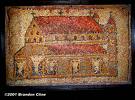 This type of "Domus Ecclesiae" developed from an ordinary house around 250 AD and was used for worship by Christian communities until they built dedicated buildings. Among the reasons for the church's transition from traditional homes to domus ecclesiae, literally "house churches," were the community's size and activities. By 250 AD, believers in Rome numbered approximately thirty thousand people. Growth such as this necessitated the remodeling of existing structures for Christian meetings.✞
This type of "Domus Ecclesiae" developed from an ordinary house around 250 AD and was used for worship by Christian communities until they built dedicated buildings. Among the reasons for the church's transition from traditional homes to domus ecclesiae, literally "house churches," were the community's size and activities. By 250 AD, believers in Rome numbered approximately thirty thousand people. Growth such as this necessitated the remodeling of existing structures for Christian meetings.✞
The Agape Feast
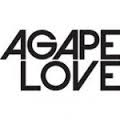 Christian churches also needed to accommodate a diversity of activities, which left its particular impact on architectural features. Martin and Davids believe the Agape Feast is separated from the Eucharist, called the Lord's Supper or Holy Communion. The Agape feast formerly preceded the service, which meant that they no longer needed dining arrangements and culinary facilities in the domus ecclesiae.✞
Christian churches also needed to accommodate a diversity of activities, which left its particular impact on architectural features. Martin and Davids believe the Agape Feast is separated from the Eucharist, called the Lord's Supper or Holy Communion. The Agape feast formerly preceded the service, which meant that they no longer needed dining arrangements and culinary facilities in the domus ecclesiae.✞
Early Church Dais and Throne
 The early Christians installed a throne with its orientation toward the dais. They separated catechumens and full members and added a baptismal font. In this way, "house churches" transitioned from meetings in homes to house churches.✞
The early Christians installed a throne with its orientation toward the dais. They separated catechumens and full members and added a baptismal font. In this way, "house churches" transitioned from meetings in homes to house churches.✞
Ostia's Praying Figure Mosaic
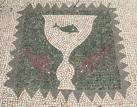 , Ostia's house at the Roman Empire's center, portrays in its floor mosaics a prominent Christian praying figure. Tiles in Ostia's expansive brick buildings of ancient Rome's harbor city show the Christianizing process at a reasonably advanced stage in the second and third centuries. In Ostia, the seaport for Roman goods, ornate tile floor mosaics detail Eucharistic loaves, a chalice, and fish motifs. Moreover, there is a fascinating complex of three houses on Caelian Hill. The use of "opus reticulatum," which is a diamond pattern brickwork, together with herringbone tiling in the construction, points to the first century as the probable date of the house's building.✞
, Ostia's house at the Roman Empire's center, portrays in its floor mosaics a prominent Christian praying figure. Tiles in Ostia's expansive brick buildings of ancient Rome's harbor city show the Christianizing process at a reasonably advanced stage in the second and third centuries. In Ostia, the seaport for Roman goods, ornate tile floor mosaics detail Eucharistic loaves, a chalice, and fish motifs. Moreover, there is a fascinating complex of three houses on Caelian Hill. The use of "opus reticulatum," which is a diamond pattern brickwork, together with herringbone tiling in the construction, points to the first century as the probable date of the house's building.✞
Distinguishing a Christian Praying Figure
 Ornate frescoes found in the Caelian houses in Rome are very similar in design and execution to the style of those at Pompeii dating to 79 AD. Before the mid-second century, one residence took over an adjoining home. In its dining area, that building contains a remarkable mosaic of a Christian praying figure, called an "Orante," from the Latin meaning "one who is praying or pleading." This figure has arms outstretched above the head in prayer. Such a pose confirms the Christian ownership of the house but in a very subtle way. These were very similar to those found in the Catacombs meaning "among the tombs." In the passageways cut in the rock, there were burial places, grave niches, and many wall paintings, and also indications of religious practices mainly by Christians.✞
Ornate frescoes found in the Caelian houses in Rome are very similar in design and execution to the style of those at Pompeii dating to 79 AD. Before the mid-second century, one residence took over an adjoining home. In its dining area, that building contains a remarkable mosaic of a Christian praying figure, called an "Orante," from the Latin meaning "one who is praying or pleading." This figure has arms outstretched above the head in prayer. Such a pose confirms the Christian ownership of the house but in a very subtle way. These were very similar to those found in the Catacombs meaning "among the tombs." In the passageways cut in the rock, there were burial places, grave niches, and many wall paintings, and also indications of religious practices mainly by Christians.✞
Pompeii Pagan Praying Figure
 The National Museum at Naples has two good examples of praying figures found at Pompeii of pagan origin, from 79 AD. There is a striking difference between the pagan and the Christian praying ones despite the similarities between them. The posture of praying Christians is quite different, with arms stretched high as if in praise, but the pagan figure's arms point forward as if to receive a gift.✞
The National Museum at Naples has two good examples of praying figures found at Pompeii of pagan origin, from 79 AD. There is a striking difference between the pagan and the Christian praying ones despite the similarities between them. The posture of praying Christians is quite different, with arms stretched high as if in praise, but the pagan figure's arms point forward as if to receive a gift.✞
Outstretched Arms
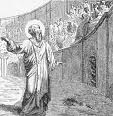 The pagan figure keeps the upper arms to the body's side while extending the forearms forward in supplication. The Christian praying person stretches out the arms above his head in prayer like Christ with arms outstretched on the cross. A Christian praying painting in the plaster on a wall at a Dura-Europos house church also indicates a Christian home. Dr. Michael Green argues that the similarity of the pagan type of praying pagan figure to the praying Christian figure in a wall painting would allow it to go unchallenged by most visitors to the home. But a Christian would immediately recognize the praying Christian, and the pagan acquaintance interested enough to inquire about its peculiarities would provide his host with an ideal opportunity to explain the Christian faith to him. At Dura-Europos, a Roman frontier fortress town in the Syrian desert, one house church building has survived and may be visited today. Archaeologists discovered it under the sand in 1934. Though built before 100 AD, we do not know when Christians first used the house as their meeting place, but in about 232 AD, the building was altered and made more suitable for services.✞
The pagan figure keeps the upper arms to the body's side while extending the forearms forward in supplication. The Christian praying person stretches out the arms above his head in prayer like Christ with arms outstretched on the cross. A Christian praying painting in the plaster on a wall at a Dura-Europos house church also indicates a Christian home. Dr. Michael Green argues that the similarity of the pagan type of praying pagan figure to the praying Christian figure in a wall painting would allow it to go unchallenged by most visitors to the home. But a Christian would immediately recognize the praying Christian, and the pagan acquaintance interested enough to inquire about its peculiarities would provide his host with an ideal opportunity to explain the Christian faith to him. At Dura-Europos, a Roman frontier fortress town in the Syrian desert, one house church building has survived and may be visited today. Archaeologists discovered it under the sand in 1934. Though built before 100 AD, we do not know when Christians first used the house as their meeting place, but in about 232 AD, the building was altered and made more suitable for services.✞
Baptistery Wall Paintings?
 After the alterations to the Dura-Europos church, paintings were made in the plaster on the baptistery walls, including a praying Christian figure. Enough paint remains for us to recognize the subjects and see what prayer and baptism meant to those Christians eighteen centuries ago. The central picture shows the scene from John 10.14-16 of the Good Shepherd bringing a sheep to the flock when Jesus said, "I am the good shepherd; I know my sheep and my sheep know me just as the Father knows me, and I know the Father, and I lay down my life for the sheep. I have other sheep that are not of this sheep pen. I must bring them also. They too will listen to my voice, and there shall be one flock and one shepherd." On the sidewalls are paintings of the healed paralytic both on his bed and carrying it recorded in Mark 2.5, "When Jesus saw their faith, he said to the paralyzed man, 'Son, I forgive your sins.'" Jesus leads Peter from walking on water into the boat. Matthew 14.31 explains, "Immediately Jesus reached out his hand and caught him. 'You of little faith,' he said, 'why did you doubt?'" The woman with her water pot at Jacob's well with Jesus speaking about the living water in John 4.10, "If you knew the gift of God and who it is that asks you for a drink, you would have asked him, and he would have given you living water." Then we see the three women at the empty tomb. "As God raised Christ, we too walk in newness of life." From Romans 6.4, "We were therefore buried with him through baptism into death so that, just as Christ arose from the dead through the Father's glory, we too may live a new life." We need to remember that most people were illiterate in the early days and that paintings and later stained glass windows were an effective way of visually telling the stories of Jesus.✞
After the alterations to the Dura-Europos church, paintings were made in the plaster on the baptistery walls, including a praying Christian figure. Enough paint remains for us to recognize the subjects and see what prayer and baptism meant to those Christians eighteen centuries ago. The central picture shows the scene from John 10.14-16 of the Good Shepherd bringing a sheep to the flock when Jesus said, "I am the good shepherd; I know my sheep and my sheep know me just as the Father knows me, and I know the Father, and I lay down my life for the sheep. I have other sheep that are not of this sheep pen. I must bring them also. They too will listen to my voice, and there shall be one flock and one shepherd." On the sidewalls are paintings of the healed paralytic both on his bed and carrying it recorded in Mark 2.5, "When Jesus saw their faith, he said to the paralyzed man, 'Son, I forgive your sins.'" Jesus leads Peter from walking on water into the boat. Matthew 14.31 explains, "Immediately Jesus reached out his hand and caught him. 'You of little faith,' he said, 'why did you doubt?'" The woman with her water pot at Jacob's well with Jesus speaking about the living water in John 4.10, "If you knew the gift of God and who it is that asks you for a drink, you would have asked him, and he would have given you living water." Then we see the three women at the empty tomb. "As God raised Christ, we too walk in newness of life." From Romans 6.4, "We were therefore buried with him through baptism into death so that, just as Christ arose from the dead through the Father's glory, we too may live a new life." We need to remember that most people were illiterate in the early days and that paintings and later stained glass windows were an effective way of visually telling the stories of Jesus.✞
The Herculaneum House
 When archaeologists discovered this Herculaneum Christian house in 1938, and when they removed fifty-five feet of volcanic mud from 79 AD, there was a small chapel, and the remains of a Christian cross appeared. Archaeologists excavated a beautifully preserved Christian house under the volcanic mud in Herculaneum not far from Pompeii in Mount Vesuvius's shadow, in Southern Italy. Herculaneum is only five miles east of Naples and a short distance from the Mediterranean. Mount Vesuvius has a large cone and steep sides from a previous eruption. Volcanic mud from Vesuvius flowed down the volcano sides in 79 AD upon the houses and people living in Herculaneum. That eruption also ejected rocks, fumes, and ash to a height of over 20 miles and molten rock at the rate of something like 1.5 million tons per second! The thermal energy involved amounted to a hundred thousand times that of the Hiroshima atom bomb! Approximately 16,000 people died according to the only eyewitness report narrated by the magistrate Pliny the Younger (61-113 AD) to the historian Tacitus (56-117 AD). Upon excavation, archaeologists found that one particular house, which was once splendid in design and decor, had fallen upon hard times before the eruption.✞
When archaeologists discovered this Herculaneum Christian house in 1938, and when they removed fifty-five feet of volcanic mud from 79 AD, there was a small chapel, and the remains of a Christian cross appeared. Archaeologists excavated a beautifully preserved Christian house under the volcanic mud in Herculaneum not far from Pompeii in Mount Vesuvius's shadow, in Southern Italy. Herculaneum is only five miles east of Naples and a short distance from the Mediterranean. Mount Vesuvius has a large cone and steep sides from a previous eruption. Volcanic mud from Vesuvius flowed down the volcano sides in 79 AD upon the houses and people living in Herculaneum. That eruption also ejected rocks, fumes, and ash to a height of over 20 miles and molten rock at the rate of something like 1.5 million tons per second! The thermal energy involved amounted to a hundred thousand times that of the Hiroshima atom bomb! Approximately 16,000 people died according to the only eyewitness report narrated by the magistrate Pliny the Younger (61-113 AD) to the historian Tacitus (56-117 AD). Upon excavation, archaeologists found that one particular house, which was once splendid in design and decor, had fallen upon hard times before the eruption.✞
Early Church Symbol
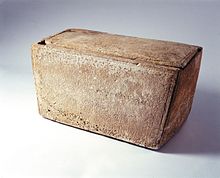 Dr. Michael Green explains that though it is not guaranteed, this likely affords proof of Christian ownership. Some experts have doubted that the cross became a Christian symbol so early. Other recent discoveries of clearly inscribed, beautiful and ornate Christian inscriptions, including crosses on bone boxes or ossuaries from the first and second centuries in Jerusalem, seem to point to the Christian cross's acceptance as a symbol much earlier than thought. Among the embellishments on one ossuary are the sign of the cross, a fish, Jonah emerging from the whale, and the anchor, all well-known early Christian symbols. The stone ossuaries are rectangular boxes for bones about two feet long from the Judeo-Christian community in Jerusalem. There is a definite probability that the cross is used as a Christian symbol in the first and second centuries AD, much earlier than is previously thought.✞
Dr. Michael Green explains that though it is not guaranteed, this likely affords proof of Christian ownership. Some experts have doubted that the cross became a Christian symbol so early. Other recent discoveries of clearly inscribed, beautiful and ornate Christian inscriptions, including crosses on bone boxes or ossuaries from the first and second centuries in Jerusalem, seem to point to the Christian cross's acceptance as a symbol much earlier than thought. Among the embellishments on one ossuary are the sign of the cross, a fish, Jonah emerging from the whale, and the anchor, all well-known early Christian symbols. The stone ossuaries are rectangular boxes for bones about two feet long from the Judeo-Christian community in Jerusalem. There is a definite probability that the cross is used as a Christian symbol in the first and second centuries AD, much earlier than is previously thought.✞
Other Crosses
 In another Herculaneum Christian house, buried in volcanic mud, is a wooden cross. There are one or two probable other examples at Pompeii, along the coast from Herculaneum, notably in the House of Pansa, which occupies an entire city block and has an approximate floor area of 20,000 square feet. This indenture in the Herculaneum residence wall is a Christian emblem from 79 AD at Mount Vesuvius's eruption.✞
In another Herculaneum Christian house, buried in volcanic mud, is a wooden cross. There are one or two probable other examples at Pompeii, along the coast from Herculaneum, notably in the House of Pansa, which occupies an entire city block and has an approximate floor area of 20,000 square feet. This indenture in the Herculaneum residence wall is a Christian emblem from 79 AD at Mount Vesuvius's eruption.✞
"Herculaneum Christian House"
by Ron Meacock © 2021
| ^Top Page | Next | Previous |